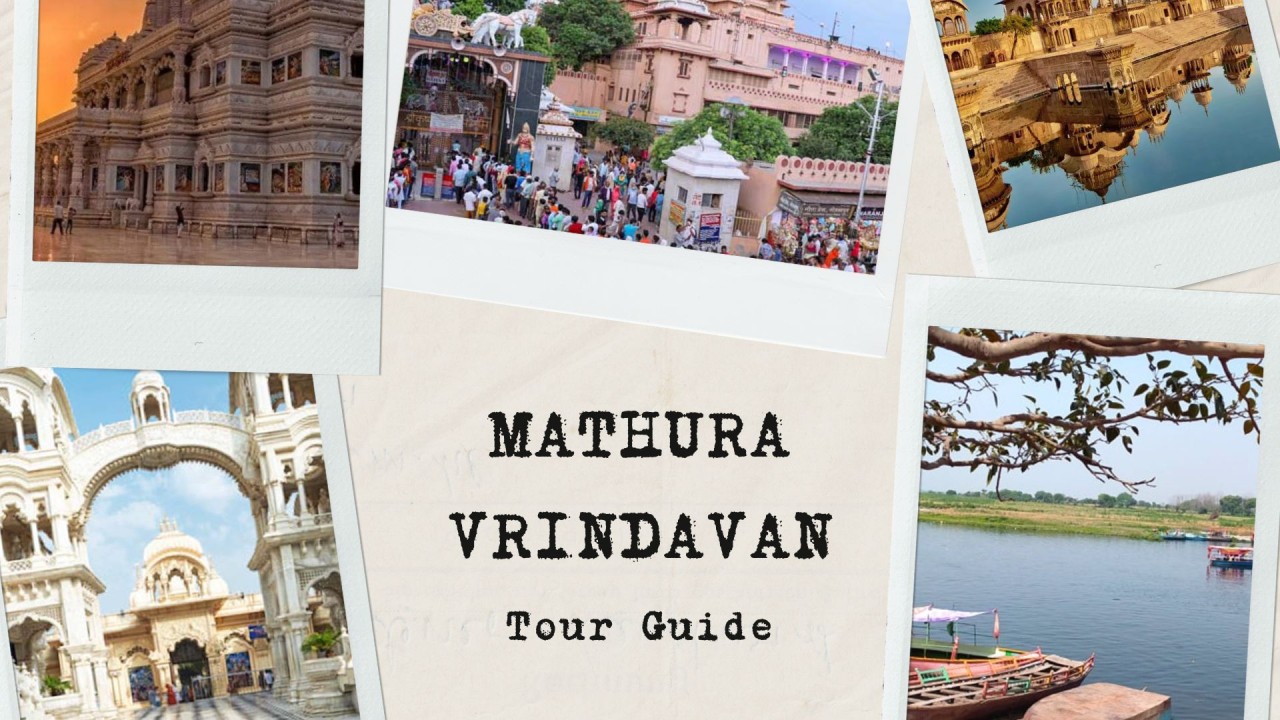
Your Comprehensive Guide to Planning a Mathura Vrindavan Tour
Planning a trip to Mathura and Vrindavan, sacred cities in India, is a challenging task that requires careful planning. These sites, deeply rooted in mythology and spirituality, offer cultural and religious experiences for both pilgrims and tourists. To ensure a memorable and enriching experience on Mathura Vrindavan tour, it is important to consider logistics, accommodations, attractions, and various cultures.
Significance of Mathura Vrindavan
Mathura and Vrindavan are significant Hindu mythological sites, believed to be the birthplace and playground of Lord Krishna. Mathura, located on the Yamuna River, is the birthplace of Lord Krishna, while Vrindavan is where he spent his childhood, performing divine pastimes with his devotees, particularly the gopis. Visits to these towns are not just pilgrimages but spiritual experiences, with temples like the Krishna Janmabhoomi Temple in Mathura and the Banke Bihari Temple in Vrindavan attracting millions of pilgrims and tourists annually. These towns are also living embodiments of devotion and culture, with prayers, streets buzzing with devotee energy, and riverbanks witnessing countless rituals and ceremonies.
1- Krishna Janmabhoomi Temple - The Krishna Janmabhoomi Temple in Mathura is a revered Hindu shrine believed to be the birthplace of Lord Krishna. The temple complex houses the prison cell where Krishna is believed to have been born. Visitors and pilgrims come to offer prayers and seek blessings at this sacred site with artwork, sculptures, and holy objects.

2- Dwarkadhish Temple - The Dwarkadhish Temple in Mathura is a significant Hindu pilgrimage site dedicated to Lord Krishna. Known for its renowned artwork and beautiful decorations, the temple is a major pilgrimage site for devotees seeking blessings from Lord Krishna, also known as Dwarkadhish. The temple complex is a cultural and religious landmark in Mathura.

3- Banke Bihari Temple -The Banke Bihari Temple in Vrindavan is a revered Hindu temple dedicated to Lord Krishna. It is known for its unique black marble idol, symbolizing his playful nature. Devotees visit the temple to offer prayers and seek blessings from Banke Bihari. The atmosphere is filled with devotional chants, bells, and incense, creating a spiritually experience.

4- ISKCON Temple - The ISKCON Temple, also known as the International Society for Krishna Consciousness Temple, is a Hindu temple in Vrindavan. It is dedicated to Lord Krishna and is part of the ISKCON movement, which promotes Krishna worship and Bhagavad Gita teachings. The temple features unique artwork and vibrant colors, and hosts cultural and educational programs to spread love, peace, and spiritual wisdom.

5- Prem Mandir - Prem Mandir, also known as "Temple of Love," is a Hindu temple in Vrindavan. It is dedicated to Radha and Krishna and features white marble architecture and artistic statues. Visitors can admire idols and scenes from their divine pastimes. Prem Mandir is a symbol of love, devotion, and spirituality, attracting pilgrims and tourists worldwide.

Radha Raman Temple - The Radha Raman Temple in Vrindavan is a revered Hindu temple dedicated to Lord Krishna, known as Radha Raman. Devotees offer prayers and seek blessings from Radha Raman, a manifestation of divine love and compassion. The temple complex features beautiful architecture and serene surroundings, making it a cherished pilgrimage site for Krishna devotees seeking spiritual relief.
Best Time to Visit Mathura Vrindavan
October to March:
The winter season in Mathura and Vrindavan offers pleasant, comfortable weather with temperatures ranging from cool to mild. This period is ideal for exploring temples and hosting festivals like Diwali and Holi. These months provide an enjoyable and memorable experience for visitors to Mathura and Vrindavan.
April to June:
The summer season in Mathura and Vrindavan is hot, humid, and challenging due to high temperatures. Outdoor activities can be uncomfortable, so it is advisable to bring sunscreen, hats, and water.
July to September:
The monsoon season in Mathura and Vrindavan is marked by heavy rainfall, disrupting travel plans and outdoor activities. Despite the beautiful green surroundings, frequent rains may hinder sightseeing, making it crucial to be prepared for wet weather.
Transportation Options
By Train: Mathura Junction is the main railway station serving the region, with trains connecting to major cities like Delhi, Agra, Jaipur, and Mumbai. Vrindavan also has a railway station, but fewer trains stop there.
By Road: Mathura and Vrindavan are well-connected by road. National Highway 44 passes through Mathura, making it easily accessible by bus, car, or taxi. Several state-run and private buses operate between Mathura, Vrindavan, and nearby cities.
By Air: The nearest airport to Mathura and Vrindavan is the Indira Gandhi International Airport in Delhi, approximately 180 kilometers away. From the airport, travelers can hire a taxi or take a bus to reach Mathura and Vrindavan.
Conclusion
Planning a pilgrimage to Mathura and Vrindavan requires careful consideration to detail, spiritual practices, and respect for the sacred heritage. A well-rounded itinerary, immersive spiritual experiences, and safety are essential for a transformative journey. Exploring temples, participating in rituals, and engaging with local devotees enrich the experience. Reflecting on Lord Krishna's teachings and experiencing the spiritual atmosphere can lead to personal growth and inner peace.